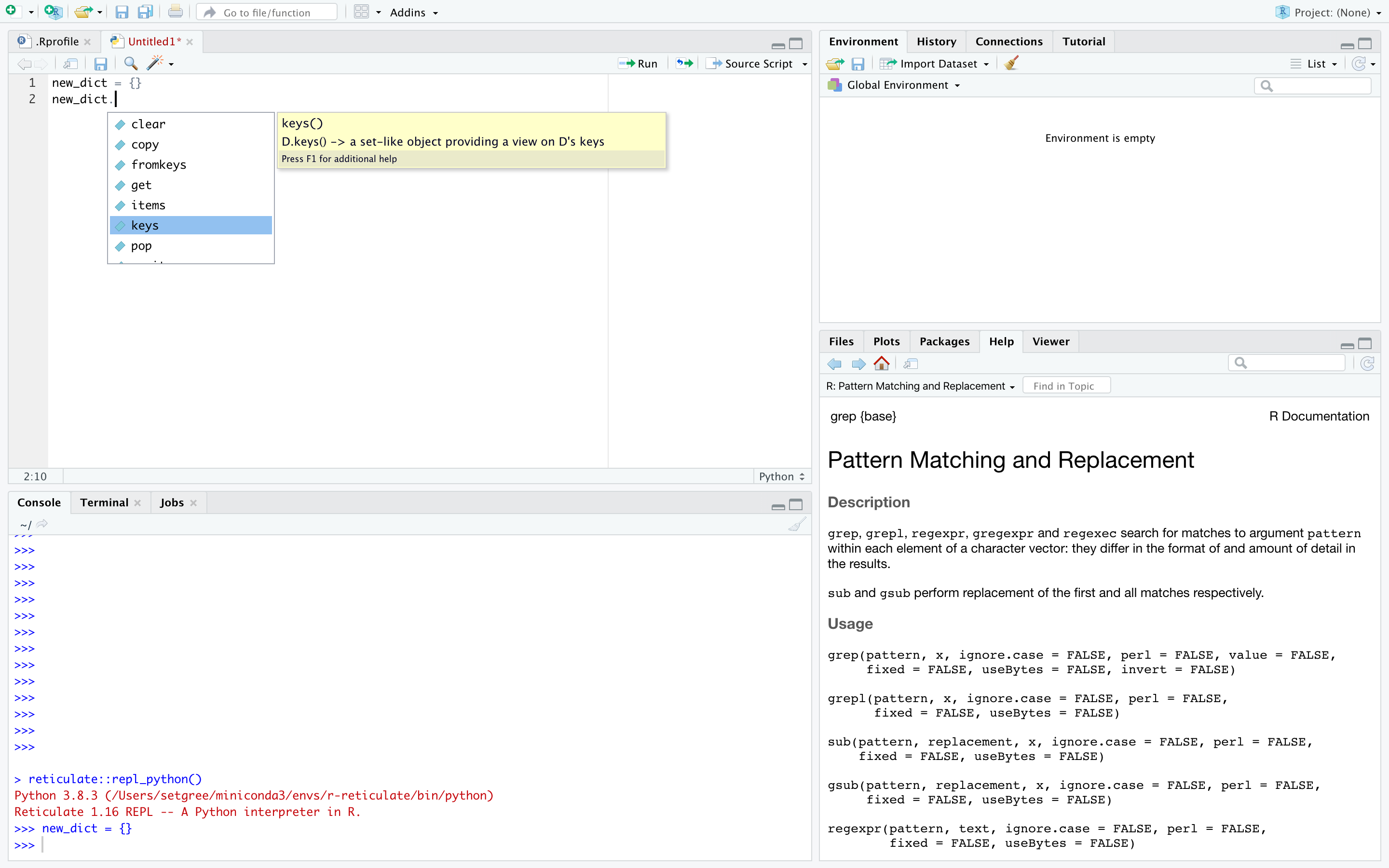
That’s all we wanted to cover in today’s article, so let’s make a brief summary next. Image 11 – Matplotlib chart in R MarkdownĪnd that’s how you can run Python code in R and R Markdown. All R scripts can be run with the Rscript call: On the Python end, you’ll need to use the subprocess module to run a shell command.

It’s really a simple one, as it only prints some dummy text to the console: Let’s cover the R script before diving further. Calling them from Python boils down to a single line of code. Using R and Python together at the same time is incredibly easy if you already have your R scripts prepared.

Many argue which is better – Python or R? But today, we ask a different question – how can you use R and Python together? Now, SQL is non-negotiable, as every data scientist must be proficient in it.

We use only four languages – R, Python, Julia, and SQL. Data science is vastly different than programming.


 0 kommentar(er)
0 kommentar(er)
